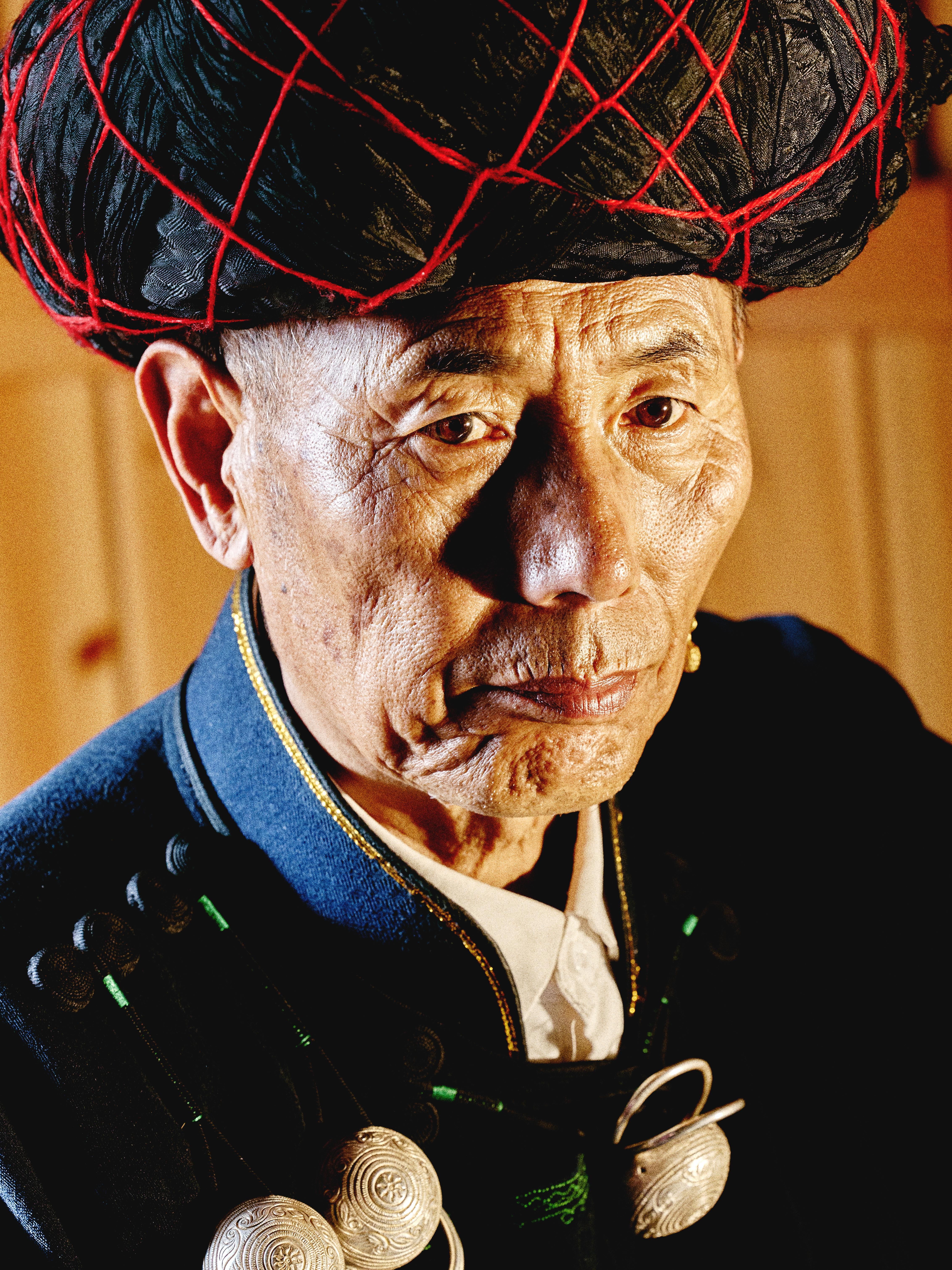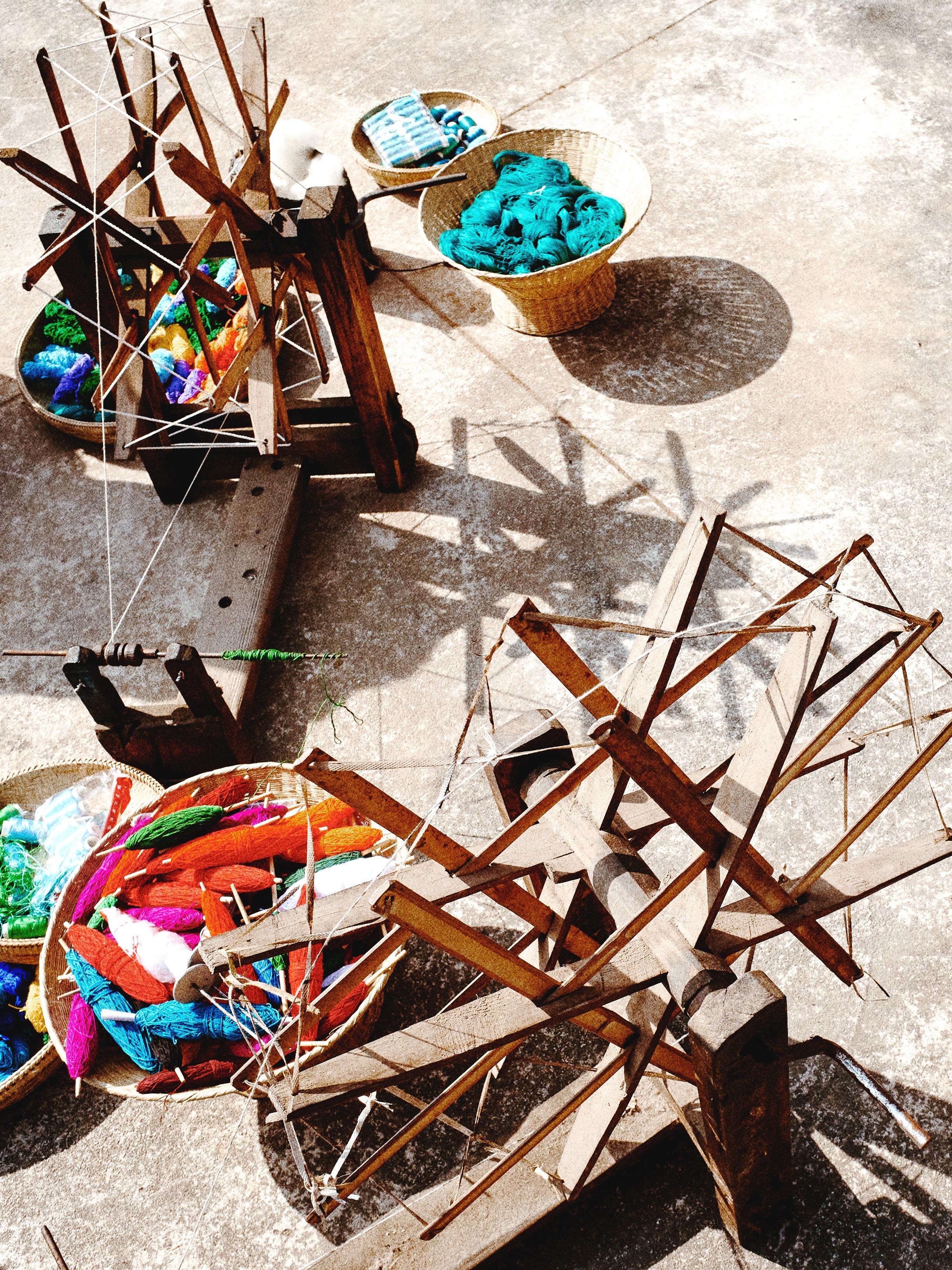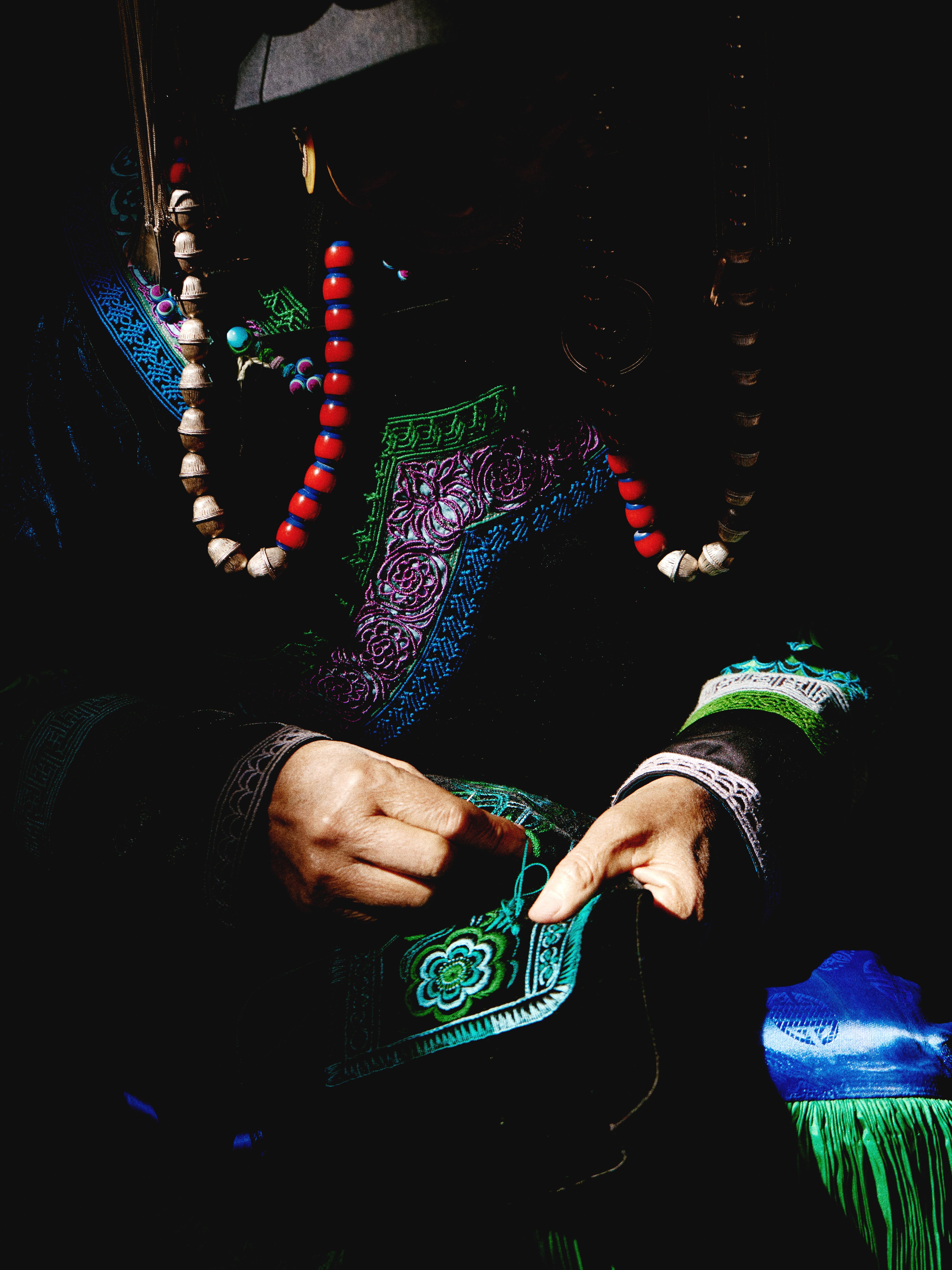Silver jewelry and embroidery techniques used by the Southwest China ethnic group on display, reports Chen Nan.
 Legu Shari and Legu Chenglong demonstrate the craftsmanship of the Yi group at the Beijing exhibition. (PHOTO PROVIDED TO CHINA DAILY)
Legu Shari and Legu Chenglong demonstrate the craftsmanship of the Yi group at the Beijing exhibition. (PHOTO PROVIDED TO CHINA DAILY)
The first thing one notices about Legu Chenglong are the egg-shaped silver buttons on his clothes. Nine in total, the buttons were handmade by the young man himself.
The 24-year-old member of the Yi ethnic group from Xichang, a city in the mountainous Liangshan Yi autonomous prefecture, Southwest China's Sichuan province, says the buttons are his finest work, and took about two weeks to finish.
When he decided to sew the buttons onto his purple coat — a traditional costume worn by Yi men — Legu Chenglong knew that people would be amazed by their beauty, and he was right.
During one Sunday afternoon, when he showed up in the centuries-old Songzhu Temple in Beijing, Legu Chenglong quickly became the focus of tourists' attention. People were intrigued by his clothes, especially his decorative silver buttons.
 Legu Shari and Axi Wuzhimo, handicraft inheritors of the Yi ethnic group. (PHOTO PROVIDED TO CHINA DAILY)
Legu Shari and Axi Wuzhimo, handicraft inheritors of the Yi ethnic group. (PHOTO PROVIDED TO CHINA DAILY)
When he took out his tools and started to carve a piece of silver, people learned that the young man was a silversmith.
Along with his father, 69-year-old Legu Shari, Legu Chenglong joined in the latest exhibition, Hand-in-Hand Initiative, in Beijing, held from May 19 to June 16. The project is a partnership between Fendi and local artisans, and was launched in Rome in 2021, toured Tokyo in April, and has now arrived in Beijing's Songzhu Temple.
"I grew up watching my father making silver jewelry every day after school. I also helped him do some simple jobs, which allowed me to learn traditional Yi craftsmanship techniques," says Legu Chenglong, who is the 15th generation of his family to have inherited the art.
Last year, Legu Shari was named by the government as a national inheritor of the craft. The silver breastplates and headdresses created by him have been collected by the Beijing Museum of Nationalities, the Sichuan Museum of Nationalities and the Liangshan Museum of Nationalities.
"My father told me lots of stories about my family's tradition of making silver products. He told me that the family had no last name in the beginning, but we were good at making silver products, which won our family the name Legu, meaning craftsmen in the Yi language," Legu Chenglong says.
 Legu Shari and Axi Wuzhimo, handicraft inheritors of the Yi ethnic group. (PHOTO PROVIDED TO CHINA DAILY)
Legu Shari and Axi Wuzhimo, handicraft inheritors of the Yi ethnic group. (PHOTO PROVIDED TO CHINA DAILY)
The Yi group's silver-making technique involves a complex process, with silver being melted and turned into flakes or delicate filigree wires to form intricate patterns.
Legu Chenglong says that one of the most difficult parts of making silver jewelry is that the craftsmen have to control the temperature during the silver melting process. It also takes years to perfect the skill of hammering the pieces into shape.
"If the temperature is too high, the silver cannot be shaped. When hammering the pieces, craftsmen need to control their strength since it's very easy to break them," he says. "That's why many young people today don't learn the technique — it is time-consuming and physically challenging."
Like many young people, Legu Chenglong had once hoped to get a job in a big city. He spent two years living in Chengdu, Sichuan's provincial capital, and worked a variety of odd jobs, from swimming lifeguard to food deliverer. In 2021, he decided to return to his hometown and devoted himself to silversmithing. Now, Legu Chenglong and his two elder brothers are all involved.
 Traditional spinning wheels used by Yi embroiderers. (PHOTO PROVIDED TO CHINA DAILY)
Traditional spinning wheels used by Yi embroiderers. (PHOTO PROVIDED TO CHINA DAILY)
"In the past, silver jewelry-making techniques were only passed on to boys in the family. The technique was considered part of the family's legacy as well as the means to make a living.
"However, now my father hopes to let more people to see and learn the technique because it would die out if fewer and fewer people knew of it," says Legu Chenglong, who plans to open a museum in his hometown, introducing the Legu family tradition and their inherited knowledge of Yi silverwork.
Axi Wuzhimo, founder of a professional Yi embroidery cooperative in Ganluo county, Liangshan Yi autonomous prefecture, called Yizhen Yixian (Yi needle, Yi thread), also joined in the Hand-in-Hand Initiative.
She started to learn the Yi embroidery technique at the age of 10 with her mother and has been practicing it for about 50 years.
 Silver is liquefied to make Yi jewelry. (PHOTO PROVIDED TO CHINA DAILY)
Silver is liquefied to make Yi jewelry. (PHOTO PROVIDED TO CHINA DAILY)
In 2012, Axi Wuzhimo was named a national inheritor of the craft.
The embroiderer started her own business in 1993 and has been dedicated to innovation of the traditional technique for many years.
"When embroidering, I am inspired by the colors of Liangshan. The wind, the river and the mountains are on my palette," says the 66-year-old Axi Wuzhimo in a video played at the exhibition in Beijing.
Anji, 28, is Axi Wuzhimo's niece, and learned the skill of embroidering from her as a child. She displayed her talent during the exhibition by embroidering soma flowers, also known as rhododendron.
Anji also has a Yi ethnic name, Jigu Jijimo — Jigu is the family name and Jijimo means "smart girl" in the Yi language.
"Soma flowers symbolize beauty and courage for the Yi. We have beauty contests in our village and the winners are named 'soma flowers,'" says Anji, who has a full-time job as a kindergarten teacher in Xichang.
 Axi Wuzhimo embroiders soma flowers, also known as rhododendron. (PHOTO PROVIDED TO CHINA DAILY)
Axi Wuzhimo embroiders soma flowers, also known as rhododendron. (PHOTO PROVIDED TO CHINA DAILY)
"I love embroidering because it's full of imagination. I often visit my aunt and learn new patterns with her. She is very creative," says Anji, adding that Axi Wuzhimo has taught the technique to about 4,000 residents of her hometown, mostly women.
"The women do embroidery when they are not working in the fields. They make extra money for their families and win respect from their husbands," Anji says.
"I also want to do the same thing to promote Yi embroidery and increase the income of local embroiderers."
Yi artisans in Xichang have created a bag in collaboration with Fendi using a velvety black fabric embroidered with blue, green and aqua-green silk threads, lined with green satin. The bag is also being displayed at the ongoing exhibition.
In the Yi culture, black symbolizes the earth, while green stands for the lush grass and trees. The embroidery is inspired by nature, represented by the soma flower, and combines various stitching types to obtain a vivid and tactile effect.
The 925-sterling silver buckle is handcrafted with beautiful three-dimensional designs.
Contact the writer at chennan@chinadaily.com.cn


